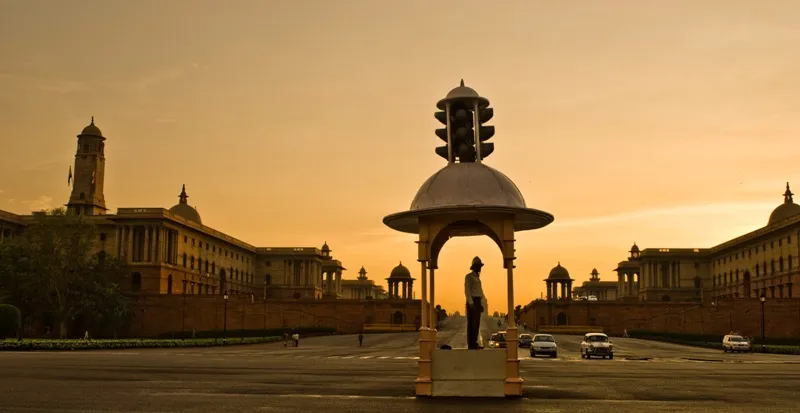-
CENTRES
Progammes & Centres
Location

Now it is just a matter of time before the Goods and Services Tax (GST) bill is passed by both the houses of the Parliament. The positive impact of the GST at an overall level is indisputable as the reform in indirect tax regime in India has been long due. The GST regime intends to achieve efficacy and efficiencies in tax administration and collection. One of the major benefits of the GST is the removal of cascading taxes (tax on tax) at each stage of value chain. Another principal benefit will arise from integration of taxes on goods and services. The new regime will also make tax evasion difficult thereby likely to broaden the tax base which is woefully low in India.
However, behind the larger effect there is likely to be variability in the impact on different constituents of the economy. The time for rolling out of the GST is an important window for businesses, the most important constituents, to critically review the ramifications for individual businesses. The effect will not be unalloyed at least in short to medium term. Also, this could have profound and lasting effect over the long term on the individual businesses.
This article attempts to catalyse discussions in this direction. At present, most of the discussions involve the impact of the GST on logistics cost or supply chain at best. However, the impact is likely to be much deeper and may pose challenge to competitive positions of the companies.
In order to understand the impact, one must throw linear thinking out of the window and take a holistic view with the eyes on inter-relationship between the elements of the system. The system thinking will help in assessing the transmission of the effects of the GST on the entire system. Since these elements through feedback loops can change the overall system behavior in a major way, it merits a serious look.
Let us see how few important strategic levers could be impacted. Before discussing the levers it is important to understand the broad structure of the proposed GST in India. The structure of GST in India is customised in order to allay the fears of States and balancing various competing requirements. The GST bill has proposed dual GST structure viz. Central GST (CGST) and State GST (SGST). The CGST and SGST are to be levied and administered by the Central Government and state governments respectively. Both CGST and SGST are proposed to be applied simultaneously and on the same base. The only exceptions where the bases may differ are in situations where different thresholds are applied by the Centre and the states.
It may be noted that input credit for CGST may only be utilised against the payment of CGST. Similarly, input credit for SGST may only be offset against the payment of SGST.
For interstate movement of goods, an Integrated GST or IGST will apply. The exclusions from the GST regime inter alia include taxes collected by local bodies, taxes on petroleum product etc.
Any shortfall in revenues for the states on account of change in indirect tax regime shall be made good by the Centre for the stipulated number of years.
Due to complicated structure of GST in India and provision for myriad exclusions, companies may find compliance a difficult ask, at least initially.
However, GST will not only have operational implications but also far reaching strategic impact on businesses. The repercussions need greater scrutiny and debate within the companies.
First, the pricing strategies for companies may need rethink. Since there will be taxes on both services and goods along the value chain, it may have effect on the overall costs and thus pricing. Though the impact will be different for different companies and different sectors, GST will likely affect the demand for price sensitive products. The change in demand may in turn change the whole economics. For example, the fixed investment is made with certain volume projections. Price changes with GST may lower the demand of a business which may render the business in a weaker position.
Second, procurement and sourcing by companies may undergo a fundamental shift. Different companies have different procurement strategies depending on the market they serve and their core areas of operations. GST may change their models by changing the economics for procurement and sourcing. For example, imported goods will also attract GST over and above custom duties (though slew of other taxes will be subsumed such as Countervailing Duties
Third, the working capital requirement may also change in a significant way. It is advisable that the companies in need of more working capital secure the same well in advance. Though the overall effect is a subject of much detailed study, the increase in working capital needs may put further strains on the banking system in India and in turn further affect the businesses.
In summary, the above mentioned examples show that the feedback loops in companies may disrupt the old ways of running businesses.
The impact may require changes in strategy and business processes hitherto proven effective. The transition may provide both the challenges and opportunities. It can give rise to competitive edge to the companies if they take an educated call.
In this backdrop, companies should dedicate a task force comprising senior people in the company and experts with strategic insights. The task force should analyse the overall impact and suggest changes in strategic direction and realignment of business processes in line with the strategic shifts.
GST is a serious matter don’t just leave to tax experts and operations team.
The author is an independent maritime and logistics professional based in Mumbai. He can be reached at rohitc01@gmail.com.
The views expressed above belong to the author(s). ORF research and analyses now available on Telegram! Click here to access our curated content — blogs, longforms and interviews.